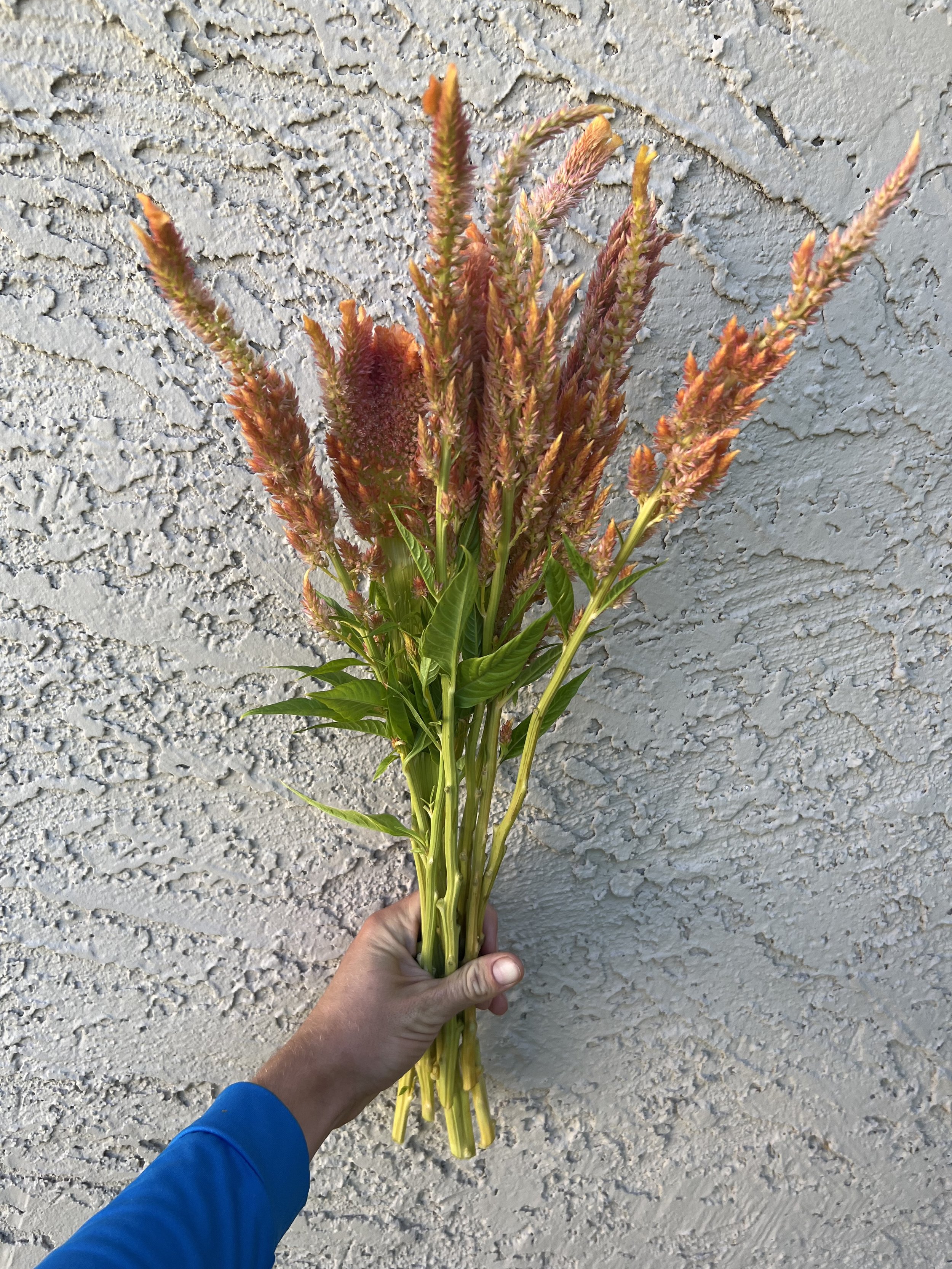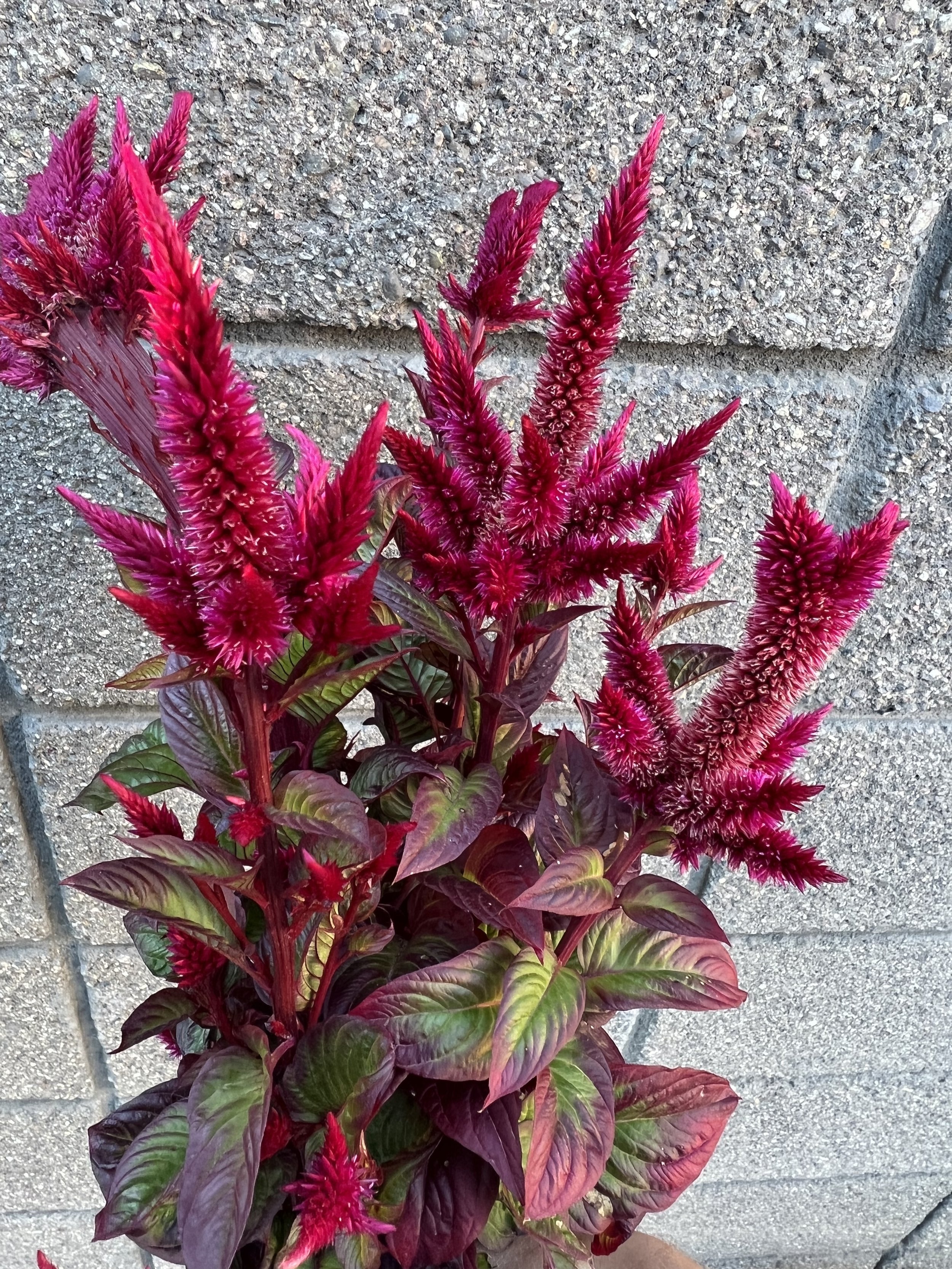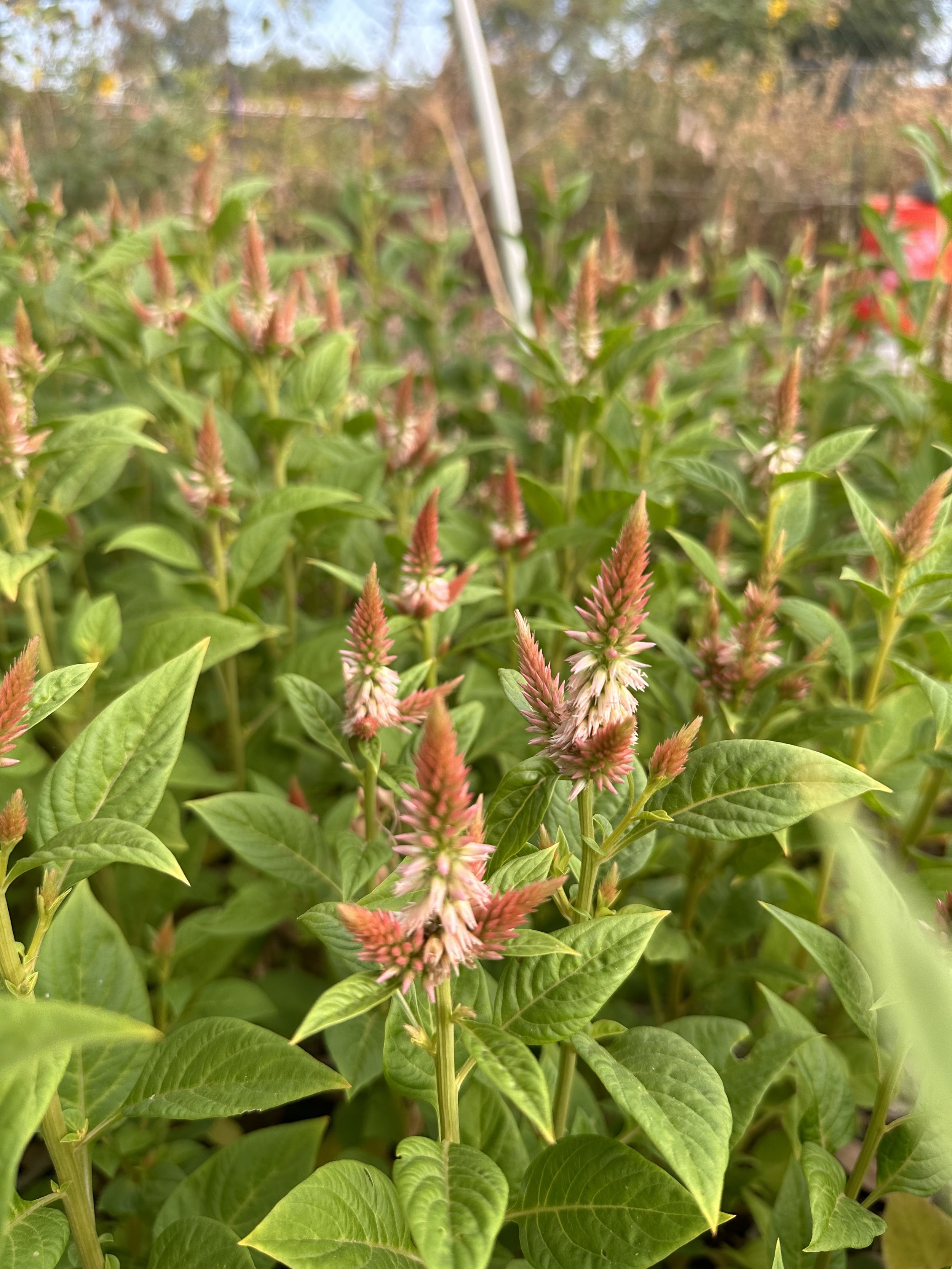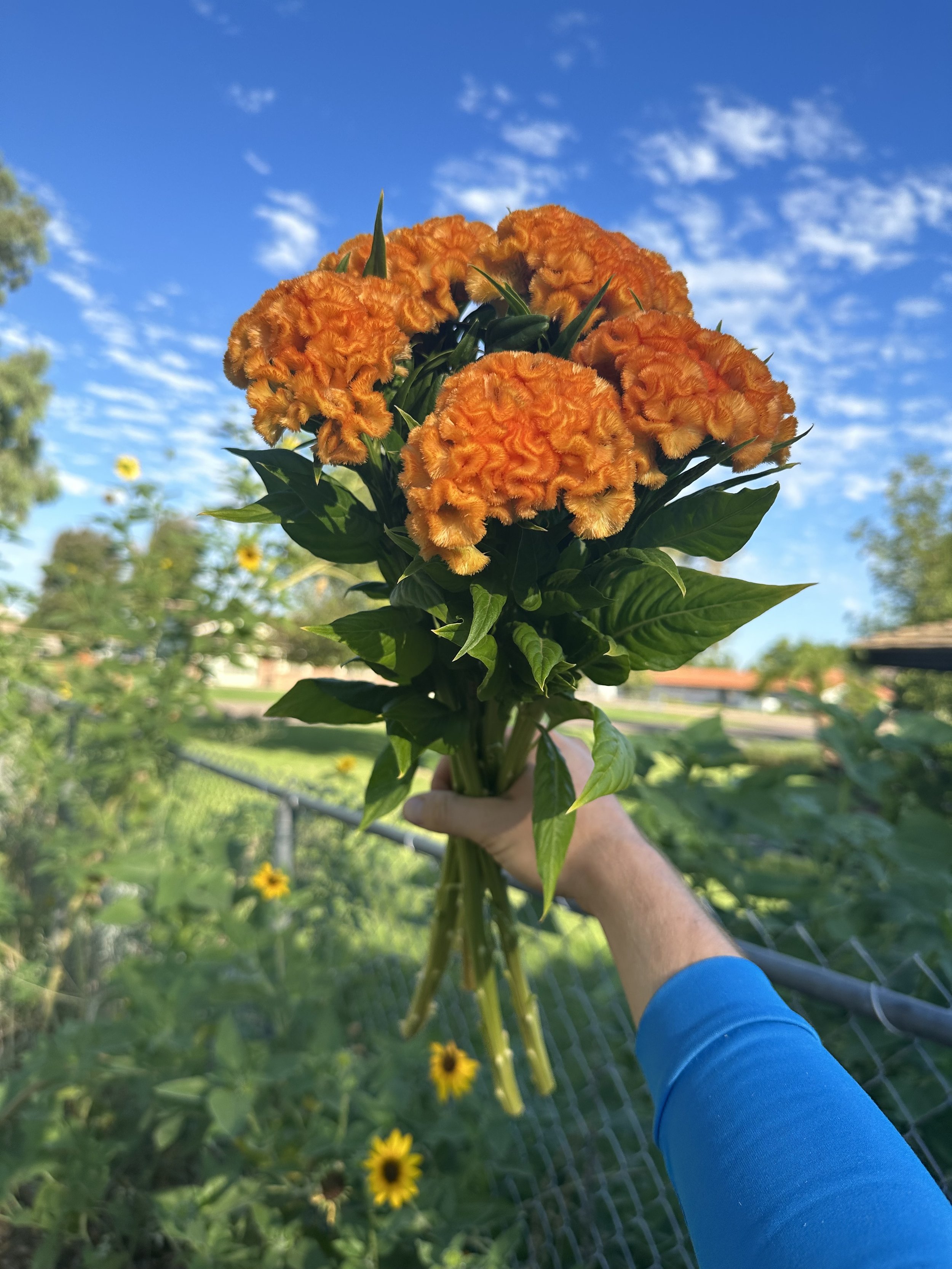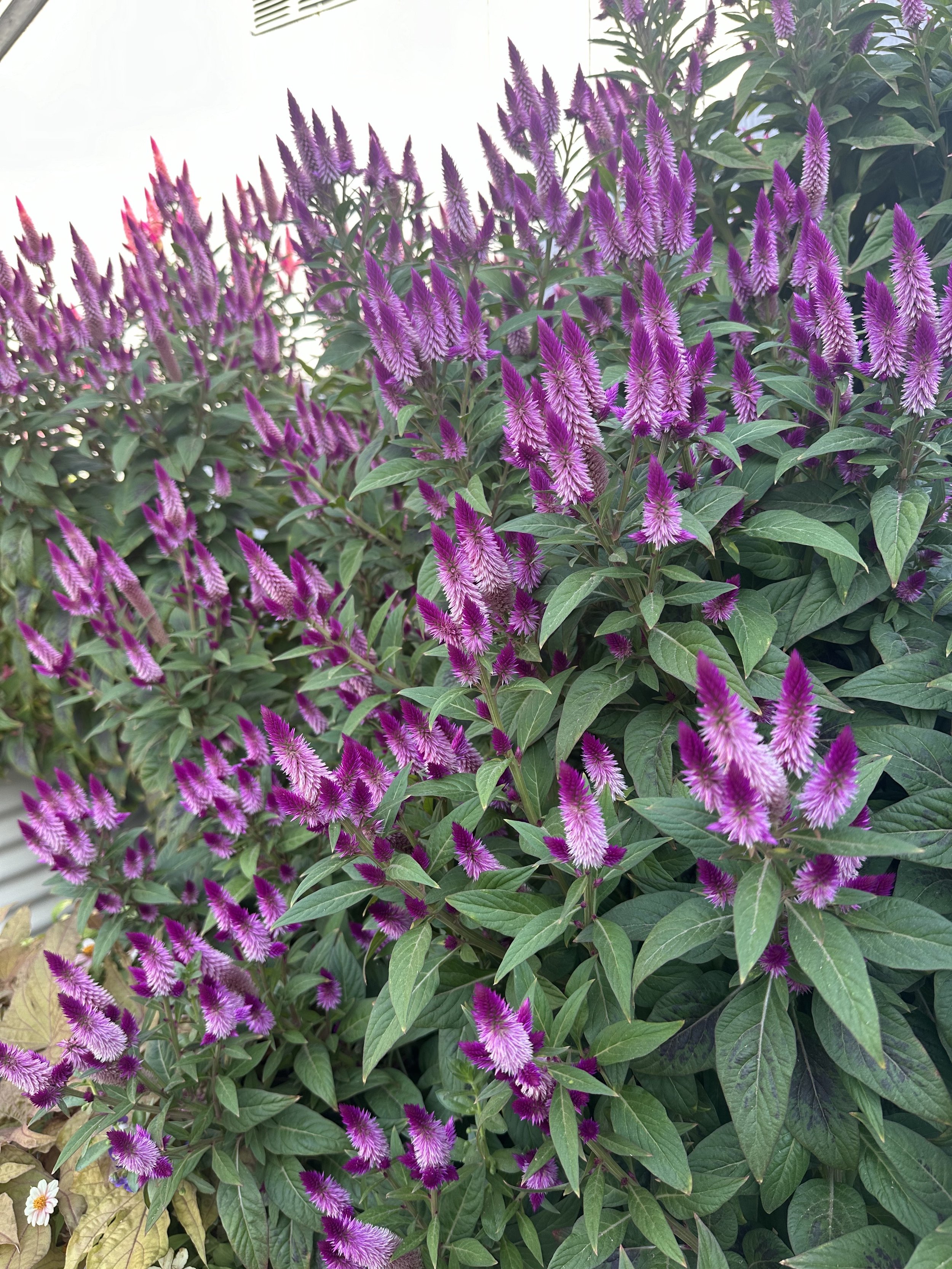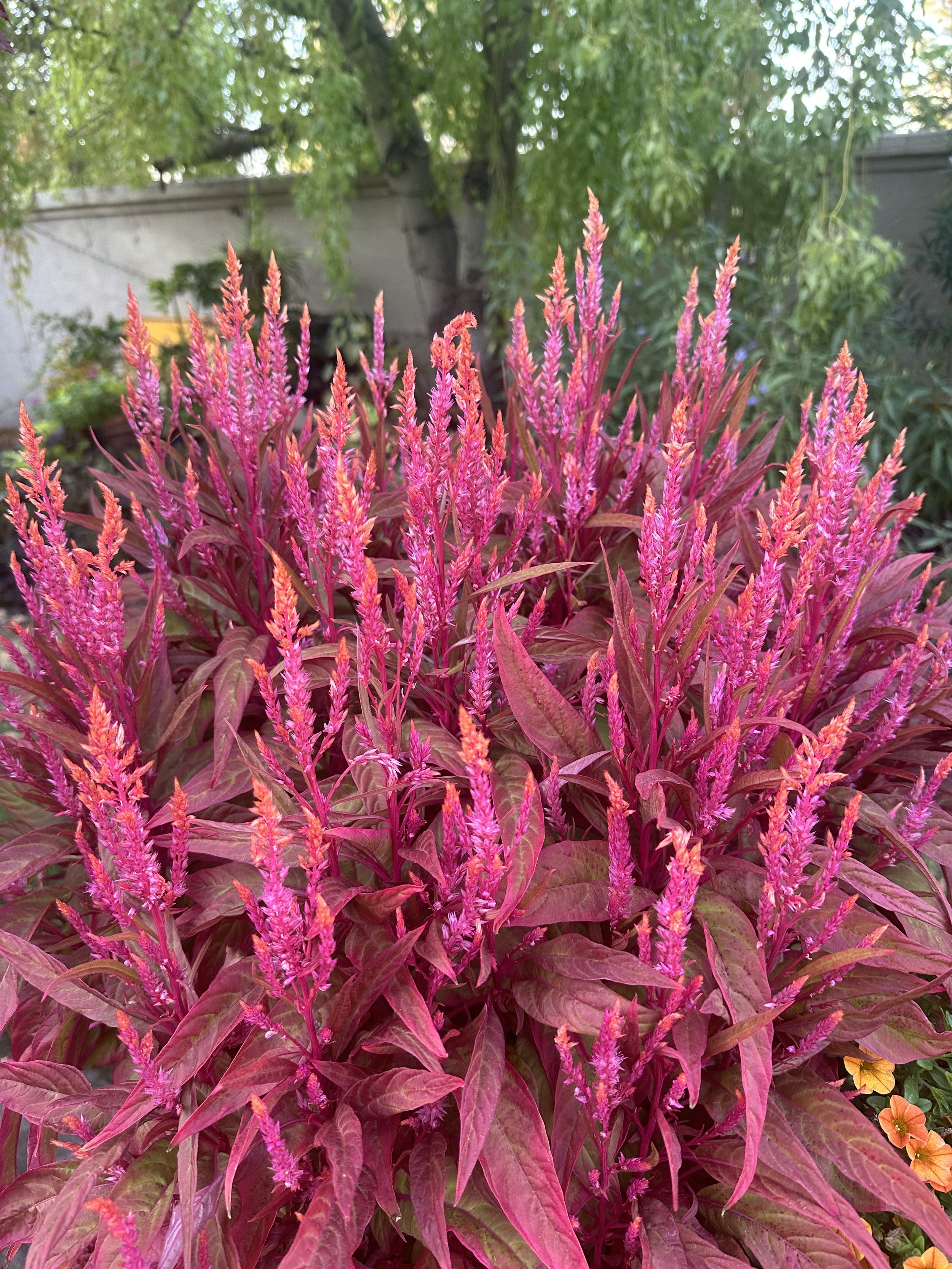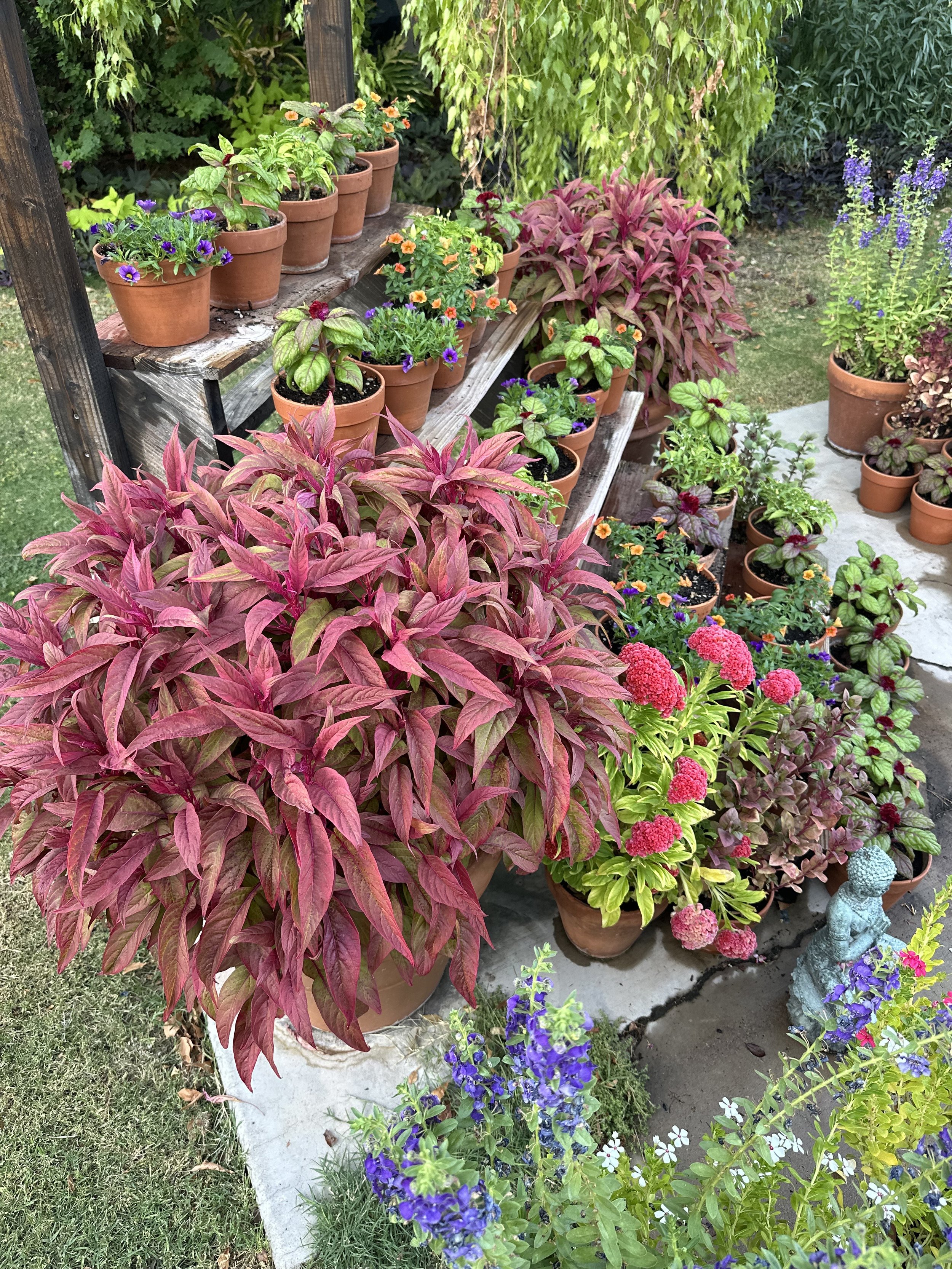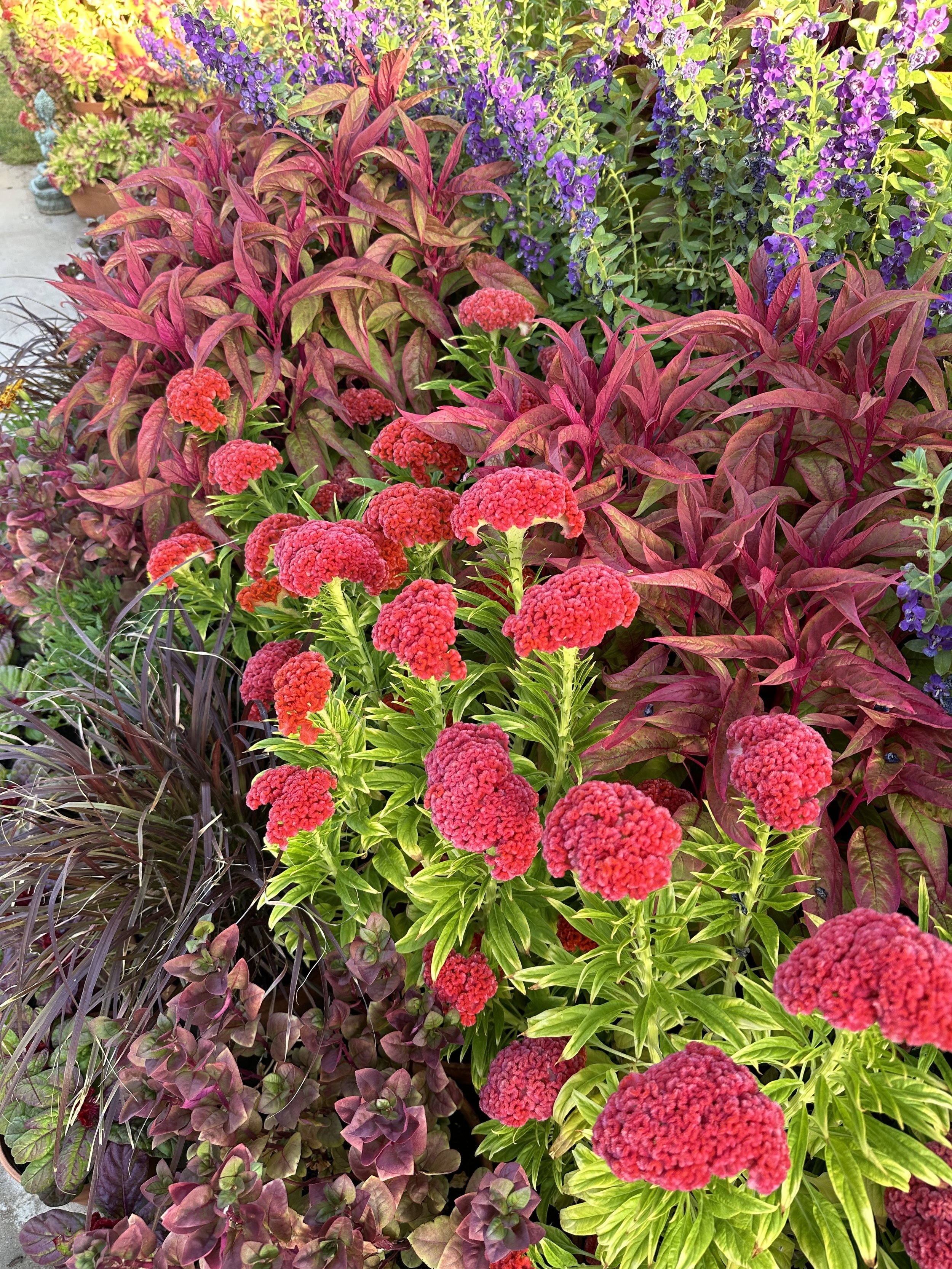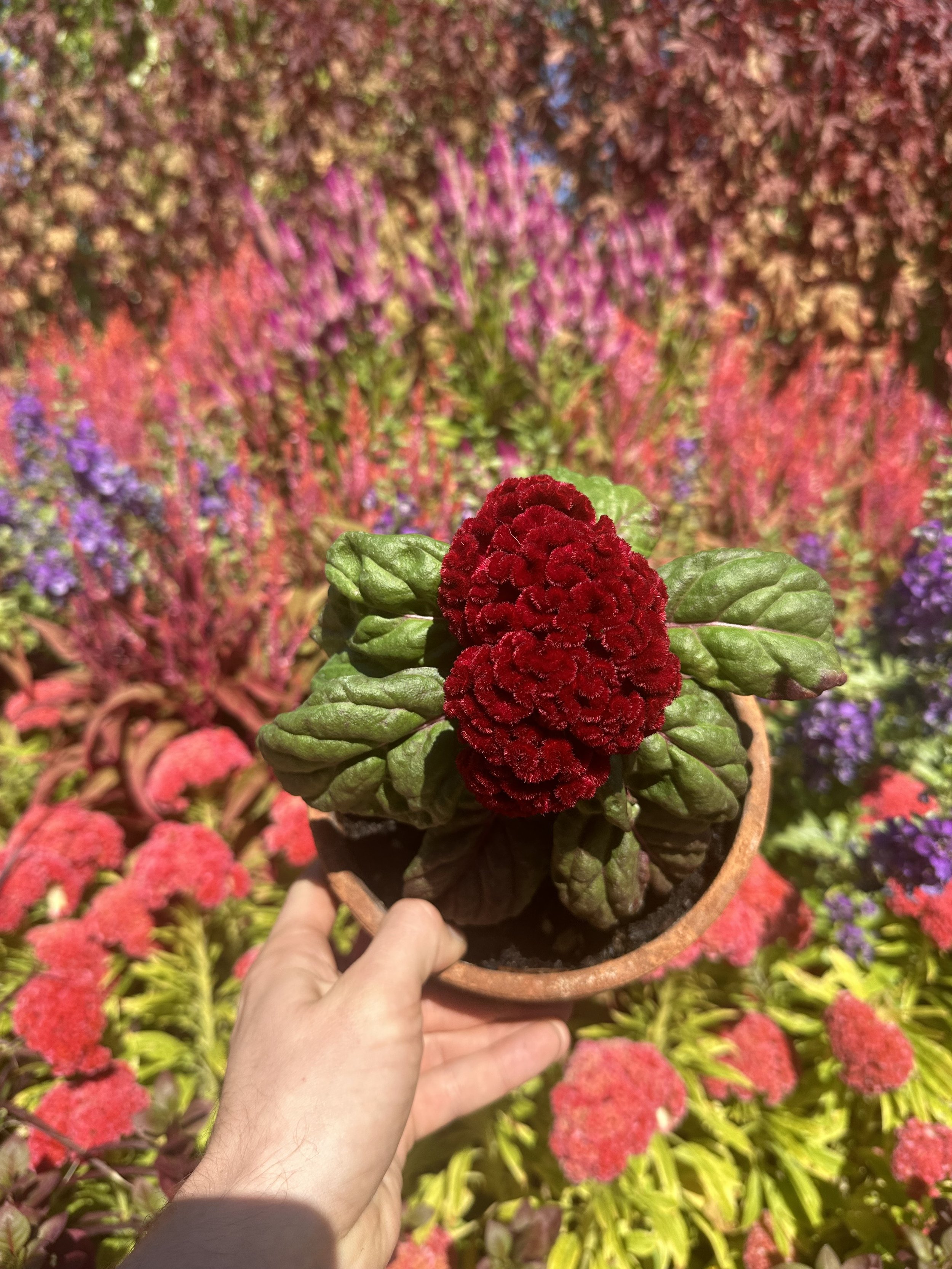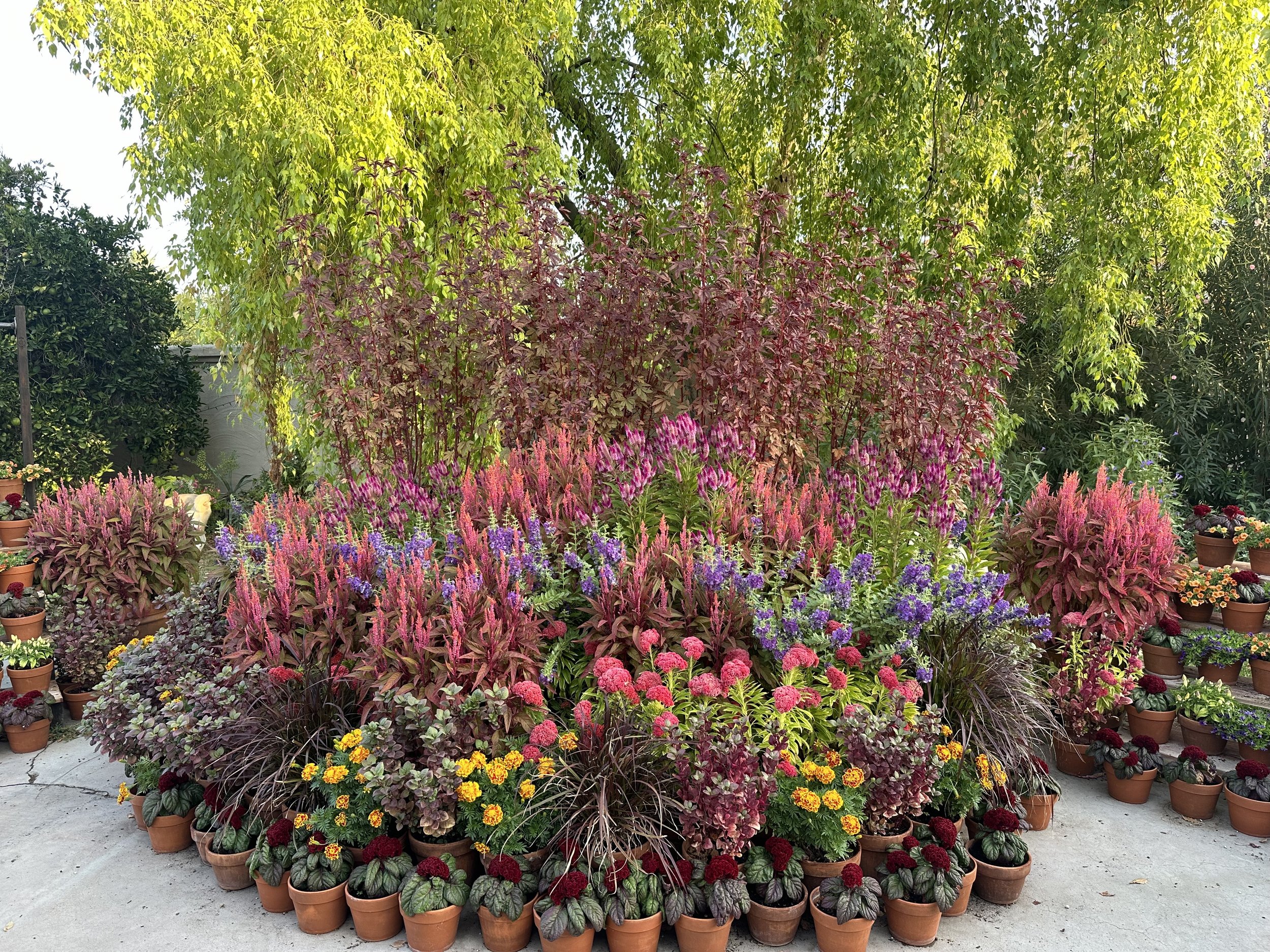Celosia
Overview:
Celosia is one of my favorite flowers to have in the field and in containers for late summer and Fall. They come in colors from pink to orange and red. They also make great dried flowers for crafting projects. These flowers can re-seed readily in the garden, which I don’t think is a bad thing! They can take hot temperatures, so when its still 90 degrees in October, we can still have the cool fall vibes with these flowers.
Adventure Level
2/5
Starting seeds:
I always recommend starting these seeds indoors. They transplant well and grow quickly inside with room temps around 75 degrees. Seeds like to be surface sown, they need light to germinate. I typically sprinkle 2 seeds in each cell, water in a flat gently on a shower setting, then lightly dust the top of the tray with fine vermiculite. Place humidity dome on top of tray and place under grow lights. Once the seedlings emerge, take off the dome and let them grow on. Seeds usually take 4-6 weeks to be able to go into the field.
When to plant outdoors:
You can plant these flowers out anytime after your last frost. I usually wait to plant out into the field during Arizona’s monsoon that officially start on June 15th. Typically I don’t plant them out until the middle of July.
Pinching:
Pinch Plume & wheat type celosia are when they are about 6” tall. I like to fertilize after pinching to help encourage good growth.
Do NOT pinch Crested Celosia. They will not bloom properly if you do.
Spacing:
6” - 9” apart
Sun:
Full sun, 6-8+ more hours per day.
Water:
Celosia like consistent moisture, but benefits from drying out. Typically they are watered once per day in the ground and in pots. They are watered 2x in containers when temperatures are about 105+
Flower Support:
Check your Celosia for mature height when deciding whether or not to use support. I like to use Hortonova in the field and Peony cages in containers or smaller garden settings. If you do not wish to sake your celosia, make sure to find varieties that stay under 24” in height.
Fertilizing:
Celosia benefit from a balanced granular fertilizer at the time of planting, as well as a bi-weekly liquid feed. If the temperatures are hot and you find yourself watering more than once per day, liquid feed once per week to compensate for nutrients leaching out of the soil. Maxsea and Neptunes Harvest are some of my favorite liquid fertilizers to use.
Succession plant?
Yes! I typically plant my first succession out into the field in July, and succession plant every two weeks until the middle of August.
Favorite Varieties for cuts:
Floret celosia
Ruby Parfait
Floret celosia
Floret offers unique celosia that are great for the home garden! Packets are a mix of pastels, that come in all different shapes and sizes. I would probably stay away from growing it if you are a flower farmer just because of the excessive variation.
Sunday Orange
Sunday is a great ‘plume’ series to grow for the cut flower garden. Tis orange color offered a great addition to any fall bouquet.
celway red
Celway celosia area wheat style celosia that have a unique flower and foliage to them!
Queen Orange
Celway 'Terra-cotta' was a popular flower with florists. It offers a wheat like plume that is a great addition to fall arrangements that need a little hint of beige. Celway 'salmon' has a slightly darker plume that I think would fit great in the home garden.
We get a selfie for the 'Ruby parfait' celosia! I loved growing this flower when we had out field. The chugged out blooms like crazy, and were a perfect touch of purple. We though they were easier to work with than gomphrena, so we opted to growing this instead as our purple element for arrangements.
Crested celosia aka Cockscombs are a fun, funky addition to any garden or cut flower production. Here is 'Queen Orange' that has a bright orange color that suits fall arrangements perfectly. Some people call them 'brain' or 'coral reef' flower with their resemblance. They are a fun texture and make a great dried flower as well. All celosia make a great dried flower though!
Favorite Varieties for Containers:
Celosia 'Intenz' offers a stunning branching habit that is perfect for the cottage or container garden. Dense foliage that has a purple varigation to it that offers interest before their bloom period. We typically plant these in June from transplants so we can have beautiful fall flowers.
Note* this variety is NOT grown from seed. Must be purchased as plugs or in nursery's.
'Dragons Breath' Celosia is probably my all time favorite celosia. It offers beautiful burgandy foliage all summer long, and bloom that are a literally like dragon's breath! Such a cool plant to have in the garden. I have found that it is one of the last celosia's to bloom, but its definitely worth the wait. I believe its triggered to bloom from shorter days and longer nights, that typically happens after the fall equinox.
Dragons breath celosia foliage pre-blooming is still a beautiful element in the summer garden!
This was the first year we grow this Cockscomb celosia Twisted 'Orange' and I was beyond thrilled by its performance. It is a branching variety which is not typically in cockscombs. Since its a branching variety we did pinch it when it was 6" tall. Each plant produced 4-6 blooms per plant.
The Plant only gets to be about 12-18" tall which is PERFECT for container work. It gives height to the boarder, without it being too tall that it would flop over. Stems are sturdy, and blooms are big and beautiful. We planted these at the same time as the 'Intenz' and 'Dragons Breath' celosias and the twisted orange's were the first to bloom. It compliments the foliage if the dragons breath celosia very well in our mid - September garden.
Cockscomb celosia Brainiac Raven 'red' was another variety that I grew for the first time this year and to say that Ive been impressed in an understatement! Such a cool variety that have beautiful dark purple - burgandy leaves that sits below a blood red crested plume perfect for fall. These were the last of the celosia to be planted, around mid August, but they sure grew FAST.
These dwarf cockscomb make a perfect addition to any small pot, boarder garden, or tired stair step planters. We have absolutely adored having these on the stair steps mixed with calibrachoa, and ornamental peppers.
We use celosia a ton in our fall garden, they make a perfect addition to any container, cut flower, or cottage garden. Just make sure you pick the right varieties for your intention! Ex: no NOT pick dwarf varieties if you want a cut flower garden! lol
Check out the 'fall gardening in HOT climates' blog post for more plants you can pair with celosia to make a stunning fall garden.


